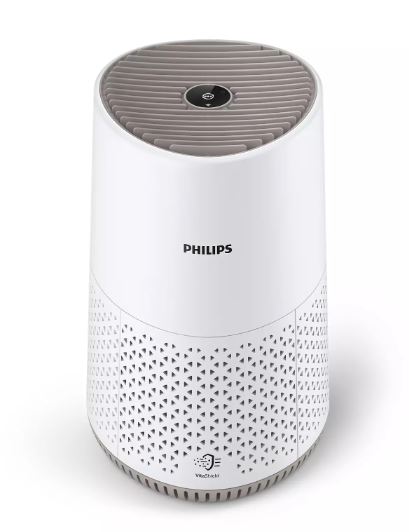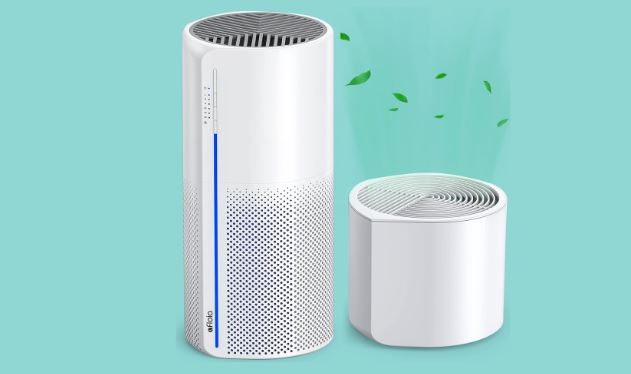Combating Mold Spores: Air Purifiers for a Healthier Environment
Combating Mold Spores: Air Purifiers for a Healthier Environment
Blog Article
In today's health-focused society, the air we breathe in has become an increasingly important consideration for individuals across the globe. With growing concerns over air pollution and a better understanding of the effects of indoor pollutants on our health, it's no surprise that the demand for air purifiers is on the rise.
Air purifiers are machines that eliminate airborne contaminants in a given area, promoting healthier indoor air. They are ideal for people with allergies, asthma, or other respiratory issues as they can significantly reduce the levels of allergens, pollutants, and irritants in the air. For those without respiratory concerns can take advantage of air purifiers, as they give added assurance and protect against airborne pathogens.
This guide will delve into the world of air purifiers, examining their advantages, the variety of options on the market, key considerations when making a purchasing decision, and maximizing your air purifier's potential. By the end, you should have a thorough grasp of air purifiers and be able to decide confidently about whether investing in one is the smart move for your household.

Decoding Air Pollutants and Their Impact on Health
To grasp the importance of air purification, it's key to comprehending the types of pollutants they target and the possible effects of exposure to these contaminants.
Indoor air pollutants can be broadly grouped into three primary types:
- Airborne Particles: This includes solid and liquid droplets floating in the atmosphere. Examples include dust, smoke, pollen, pet dander, mold spores, and more. Particulate matter can lead to respiratory complications and set off allergic responses.
- Understanding Volatile Organic Compounds: VOCs are gases emitted from various solids or liquids. Sources of VOCs include paints, cleaning products, aerosol sprays, and pesticides. Exposure to VOCs can lead to eye, nose, and throat irritation, headaches, and nausea.
- Biological Hazards: These include bacteria, viruses, mold, and mildew. They can cause a variety of health problems, from minor allergies to serious infections.
The impact of these contaminants on human health can vary significantly. For individuals with respiratory conditions or compromised immune systems, exposure to indoor air pollutants can lead to significant health complications. For those in good health, chronic exposure to certain pollutants can impact respiratory health and overall well-being over time.

The Science Behind Air Purifiers
Air purifiers use a variety of physical and chemical processes to effectively eliminate contaminants. Understanding the fundamental processes employed by purifiers will help you appreciate their effectiveness and the different types available on the market.
Here are the core processes and cutting-edge technologies used in air purifiers:
- The Power of Mechanical Filtration: This is the predominant technique used in air purifiers. It involves using specialized filters to capture particles as air is forced through the purifier. The filter composition can differ, each designed to trap particular particle types. For example:
- Initial Defense: Pre-filters: These are usually the first line of attack, trapping bigger contaminants like hair and dust.
- HEPA Filters: The Gold Standard: HEPA filters are exceptionally efficient at trapping tiny particles, including bacteria, viruses, pollen, and dust mites. To be labeled a genuine HEPA filter, it must capture at least 99.97% of particles as small as 0.3 microns.
- carbon filtration: These filters are designed to adsorb odors, VOCs, and gaseous pollutants.
- The Power of Ionization: Ionizers use electrical charges to create ions with a negative charge, which bind to particles in the air. The charged particles are drawn to nearby surfaces or the purifier itself.
- Ozone Generators: Some air purifiers use ozone, a powerful oxidant, to break down pollutants. While effective, excessive ozone exposure carries risks so these types of purifiers should be used with moderation and in well-ventilated areas.
- Ultraviolet (UV) Light: UV light can be used to effectively eliminate bacteria, viruses, and mold. UV light is often used in combination with a filter to eliminate particles, while UV light ensures any remaining biological contaminants are destroyed.
The Ultimate Air Purifier Guide
With a plethora of options available, selecting the right air purifier can be a daunting task. It's important to consider several factors to ensure you make the best decision for your unique requirements and space.
Here are some essential factors to weigh:
- Considering Room Size: Air purifiers are typically designed for specific areas, so it's important to choose a model that can efficiently purify the air in the designated space. Most purifiers will list a suggested room size or CADR rating, which indicates the rate at which it can deliver clean air.
- Understanding Contaminants: Identify the types of pollutants you want to target. If you suffer from allergies, look for a purifier with a true HEPA filter. For eliminating odors, consider a model with a carbon-based filter. If you're concerned about bacteria and viruses, a purifier with UV light technology might be best.
- Noise Level: Air purifiers can produce a range of noise outputs, so if you plan to use it in a serene environment, look for models with a sleep mode or quiet setting.
- Long-term Considerations: Consider the ongoing costs and maintenance requirements of the purifier. HEPA filters, for example, typically need to be replaced every 6-12 months, depending on use and environmental factors. Remember to budget for filter replacements when making your choice.
- Enhancing Your Experience: Many purifiers offer innovative smart capabilities like air quality sensors, automatic modes, and Wi-Fi connectivity, allowing wireless control and real-time data. These features can make your purifier more user-friendly and efficient.
Maximizing the Benefits of Your Air Purifier
Once you've invested in an air purifier and set it up, there are several things you can do to ensure it operates at optimal levels and delivers the maximum benefits:
- Optimal Placement: Position your purifier in an open area, away from walls and furniture, to ensure effective airflow. Avoid placing it near windows or doors as drafts can impact its efficiency.
- Keep it Running: For the best results, it's recommended to run your purifier around the clock. Many models have low-energy settings or automatic modes that adapt to the air quality, so you can maintain healthy air quality while conserving energy.
- Filter Maintenance: Regularly adhere to the recommended filter replacement schedule. Over time, filters become filled with trapped particles, impacting performance. Schedule filter replacements so you don't forget.
- Minimize Indoor Pollutants: Alongside using an air purifier, take steps to limit indoor contaminants. This could include regularly vacuuming and dusting, using natural cleaning products, and minimizing the use of strong chemicals or aerosols. Report this page